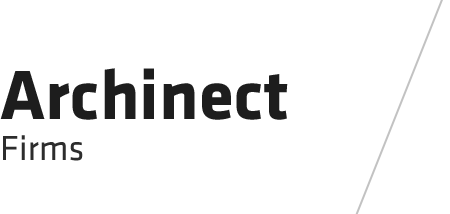
New York, NY
As cities across the United States face a shortage of affordable housing, architects are responding with new design approaches that raise the bar for livable, innovative, and sustainable apartment communities for all income levels.
Among the firms championing these approaches is CetraRuddy, the innovative architecture and interiors firm known as a leader in urban housing solutions. CetraRuddy's experts—including principals Eugene Flotteron, AIA, and Brian McFarland, AIA—are now engaged in a number of noteworthy affordable or mixed-income projects.
From Passive House strategies that boost sustainability and enhance occupant comfort, to architecturally distinctive towers or large mixed-use complexes that seamlessly fit into existing neighborhood environments, CetraRuddy is exploring new ways to address challenges and opportunities related to affordability and livability in urban environments.
“Well-designed housing contributes to positive physical and mental health, promotes efficiency and green living, and engenders a feeling of community and belonging for residents and neighbors alike,” says CetraRuddy’s Eugene Flotteron. “Working with innovative partners across New York and the country, we’re showing that these concepts apply to urban housing at all scales."
Illustrating these ideas, Flotteron— who has also served as an ambassador for Staten Island’s Healthy Housing program—points to several notable CetraRuddy projects throughout New York City. The recent and upcoming works include:
• The Lirio, a 100% permanently affordable building targeting Passive House and LEED Gold Certifications, will be developed in Manhattan’s Hell’s Kitchen neighborhood. Developed through a partnership between New York City’s Department of Housing Preservation and Development, the Metropolitan Transit Authority, the developer The Hudson Companies Inc., and the social services nonprofit Housing Works, Inc., this project will transform a city-owned site used for surface parking into 113 units of affordable and supportive housing, including a number of apartments reserved for the formerly homeless. CetraRuddy’s design for the nine-story masonry-clad building is complementary to the existing neighborhood fabric, and will also include community-focused ground floor retail.
• 22 Chapel Street, a distinctive 20-story tower now rising in Downtown Brooklyn recognizable for its unique cladding and faceted form. Developed by Delshah Capital and OTL Enterprises, 22 Chapel Street offers 45 apartments leased as part of the Affordable Housing New York program, with the remaining 135 units targeting rents affordable for working families. CetraRuddy’s design optimizes sunlight, views and fresh air for every unit, and incorporates retail space and 15,000 square feet of community areas, along with a new headquarters for the nonprofit START organization. Located at the nexus of two major subway lines, 22 Chapel Street offers one-stop access to Lower Manhattan. Completion is anticipated for 2021.
• The Lois, a 250-unit mixed-income community nearing completion in Brooklyn’s East Flatbush/PLG neighborhood, which is transit-rich and a block from a major medical campus, but has been underserved with new housing and retail options. Developed by Hudson Companies, the building is the second in a phased project bringing more than 400 apartments to a site formerly occupied by a series of low-rise commercial structures. CetraRuddy’s design for The Lois references the growing neighborhood's industrial past, with a unique façade featuring a rhythm of recessed masonry expressions and copper panel accents. Rising eight stories with a series of carefully placed setbacks, the building adds significant density while fitting seamlessly into the streetscape. An affordable housing lottery is currently underway.
“Alongside policy improvements and strategic planning, creative design solutions can play a critical role in addressing the challenges facing affordable and workforce housing developments,” concludes CetraRuddy’s Brian McFarland. “These challenges include issues of land use, ongoing operational costs, sustainability and resiliency, and resident experience. As architects, we have the tools to help make affordable housing feel like ‘home.’ This is fundamental to our mission at CetraRuddy.”
No Comments
Block this user
Are you sure you want to block this user and hide all related comments throughout the site?
Archinect
This is your first comment on Archinect. Your comment will be visible once approved.